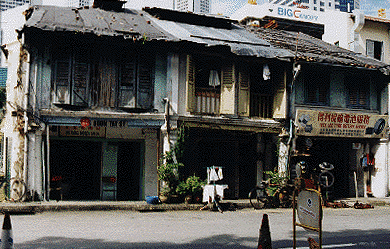A number of the health problems that an aged encounters are often times overwhelming to their family. In Malacca, where the Dutch ruled for about 200 years, the store homes were taxed according to the width of its front elevation. Shophouses of the Transitional Fashion continued the similar designs in their windows and doors but often furnished with glass-plated shutters. Also, shophouses had been usually built again to back, with tiny alleyways separating the rear sections of adjoining rows; it’s down one such alleyway that the brothels of Desker Highway are tucked away.
Late Shophouse Type (1900-1940): Usually hailed as probably the most spectacular and vibrant of all shophouses, the Late Shophouse Type displays hanging, diverse and eclectic ornamentation, equivalent to ornamental wall tiles, framing of home windows with columns and pilasters, as well as the introduction of cultural influences reminiscent of roof eaves (Malay) and decorative tiles (Peranakan) to the constructing.
Shophouses in Singapore typically use two varieties of tiles for his or her roofs – the terracotta tiles and the flat ‘Marseilles’ tiles. By the mid-twentieth century, pastel colors (rose pink, baby blue, mild yellow, and so on.) turned popular, and so they stay the colors that most individuals most strongly associate with these buildings. When the Housing and Growth Board (HDB) constructed the low-mendacity flats within the new cities in the early eighties, they featured comparable walkways in entrance of the retailers on the floor floors, which were also covered and shaded by the second-storey units.
Generally a single flooring home could be lifted to develop into the second flooring of an expanded residence. Historically shophouses had been built with structural (i.e. load bearing) timber beams which carried the load of the roof and floors. In 1981, Emerald Hill Road’s ageing prewar shophouses and terrace homes, constructed initially of the 20th century, appeared sure to face the destiny of demolition.
Moreover residential and commercial purposes, the early shophouses have been additionally used as government’s administrative offices, public clinics and dispensaries, hotels, schools, spiritual places of worship, cinemas and theatres. It is easy to spot Singapore’s distinctly British colonial structure , but it surely’s unimaginable to overlook the nation’s vibrant rows of shophouses that line the streets and alleys of Singapore’s historic neighbourhoods.